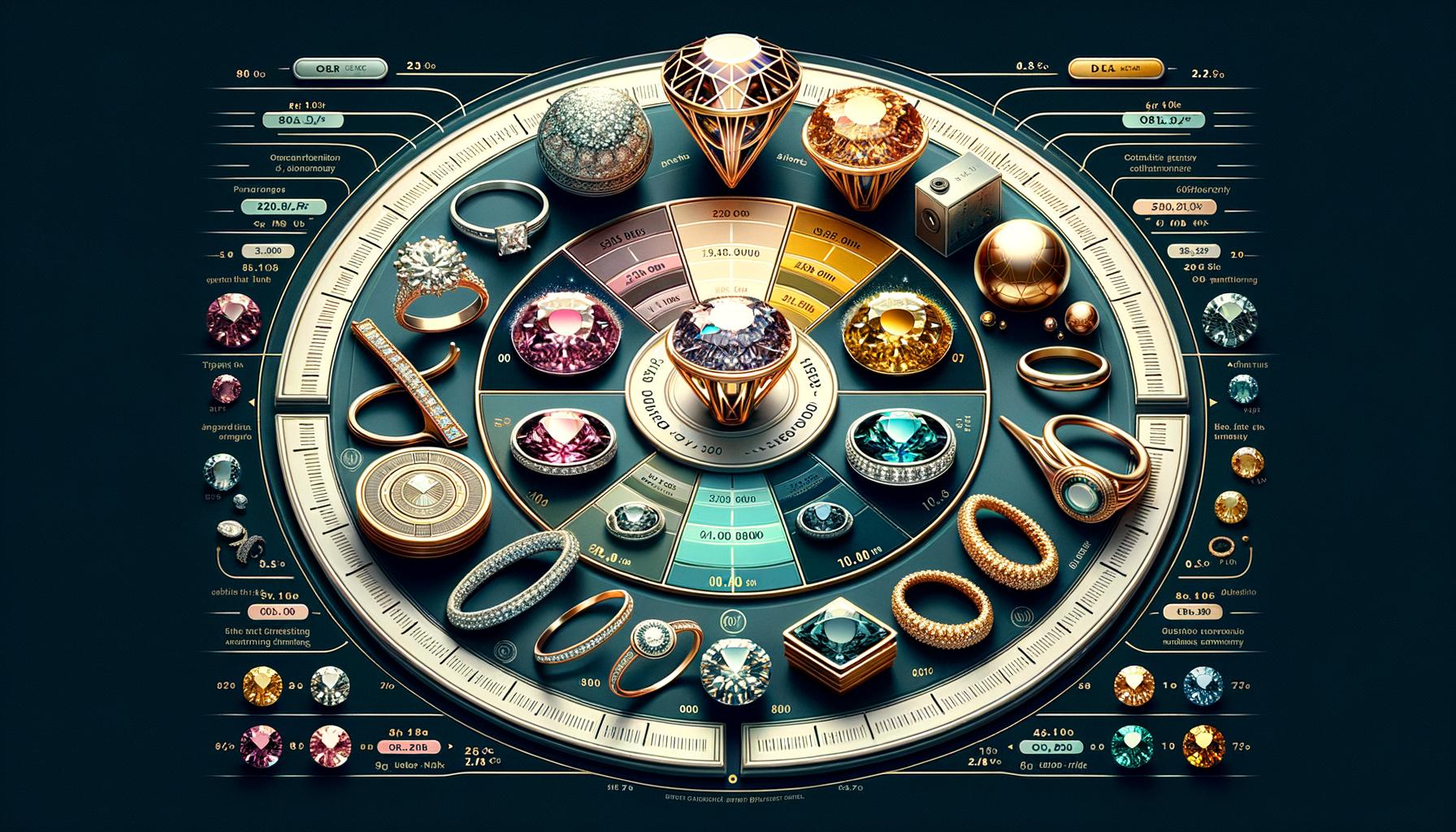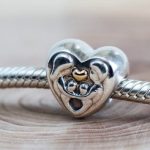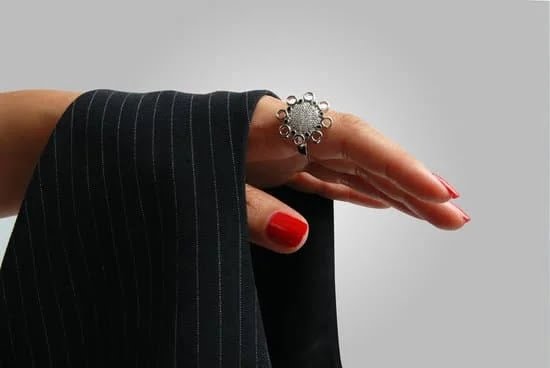When it comes to selecting jewelry, one of the most critical factors to consider is the durability of precious metals: how to choose long-lasting jewelry that can withstand everyday wear and retain its beauty over time. Durability in the context of jewelry primarily refers to its ability to resist wear and tear, tarnish, and damage. This often involves understanding the inherent properties of various precious metals and how they perform under different conditions.
Durability is a vital consideration for several reasons. First and foremost, jewelry items such as wedding bands, engagement rings, and heirloom pieces are worn frequently and hold significant sentimental value. Losing or damaging such items can be an emotional as well as a financial blow. Moreover, durable jewelry represents a wise investment; pieces that maintain their integrity over time ensure that your expenditure remains worthwhile.
To make an informed purchase, it’s essential to know which precious metals are commonly used in jewelry and their individual characteristics. Each metal offers unique advantages that contribute to its overall durability, making it more or less suitable for certain types of jewelry. By understanding these nuances, you can select pieces that not only fit your aesthetic preferences but also promise longevity.
Common Precious Metals Used in Jewelry
When it comes to selecting durable jewelry, understanding the characteristics of common precious metals is key. Gold, silver, platinum, and palladium are some of the most admired metals in the jewelry industry due to their unique properties and lasting appeal.
Gold is a popular choice for its luster and malleability. It’s available in various karat levels, such as 14k, 18k, and 24k, which denote the purity of the gold.
While pure gold (24k) is visually striking, it is also softer and more prone to scratches – making lower karat gold (14k or 18k) mixed with alloy metals a more durable option for everyday wear. This combination not only enhances durability but also adds unique shades ranging from warm yellow hues to rosy pinks.
Silver stands out due to its affordability and elegant appearance. However, sterling silver-an alloy composed of 92.5% pure silver-has become more common in jewelry because it significantly increases strength while maintaining beauty. Despite this improvement, silver remains softer than other precious metals like platinum or palladium, requiring proper care to prevent tarnish over time.
| Precious Metal | Key Properties |
|---|---|
| Gold | Lustrous, Malleable; Lower karats enhance durability |
| Silver | Elegant, Affordable; Sterling silver increases strength |
Platinum offers exceptional hardiness and resistance to wear and tear compared to other precious metals. It’s dense and heavy, contributing to its high price point but ensuring long-lasting jewelry that retains its finish even after years of use. Palladium shares several similarities with platinum yet shines as a lighter alternative that doesn’t sacrifice durability or luxury.
Understanding these distinct properties can significantly impact your choice of long-lasting jewelry made from precious metals. Therefore standardize practices such as evaluating metal purity or scrutinizing craftsmanship can be pivotal steps toward choosing pieces synonymous with lasting elegance.
Factors Affecting the Durability of Precious Metals
The durability of precious metals is influenced by a number of factors, making it essential for consumers to understand these elements when choosing long-lasting jewelry. One significant factor is the composition of the metal itself.
Pure metals, such as 24k gold or fine silver, are generally softer and more prone to scratching and denting than their alloyed counterparts. For instance, 14k or 18k gold-both alloyed with other metals like copper or nickel-offer enhanced sturdiness due to the increased hardness from these additional elements.
Another key aspect affecting durability is wear and tear. Daily activities can expose jewelry to physical stress that may weaken its structure over time. For example, rings and bracelets experience constant rubbing against surfaces, while necklaces might tug and pull when worn.
Environmental factors also play a crucial role; exposure to chemicals in cleaning products, saltwater, or humidity can cause tarnishing or corrode certain metals faster. Knowing how your lifestyle intersects with these variables can help in selecting pieces best suited for enduring everyday rigors.
Alloys and treatments further alter a metal’s durability profile. Many jewelers use treatments such as rhodium plating on white gold to enhance its appearance and resistance to scratches. However, these coatings can wear off over time and may require re-plating for maintenance.
Also noteworthy are modern techniques employed in metalworking which provide finishes that significantly improve surface hardness without compromising other qualities. When evaluating options for durable jewelry, understanding how alloys and surface treatments impact longevity will better equip you for making informed decisions about your investment in precious metals.
- Understand how pure metals differ from their alloyed versions.
- Consider daily wear and environmental exposure.
- Acknowledge the benefits and limitations of various metal treatments.
Considering all these components can significantly influence your experience with jewelry durability over time, allowing you to appreciate fully the durability of precious metals: how to choose long-lasting jewelry based upon nuanced details rather than just aesthetic appeal alone.
Assessing the Durability of Gold
Karat Levels and Their Impact
When evaluating the durability of precious metals, it’s essential to consider the karat level of gold jewelry. Gold is measured in karats, which represent the purity of the metal, with 24k being pure gold. While 24k gold boasts an unmatched luster and prestige, it is inherently soft and more susceptible to scratches and dents.
Therefore, for those prioritizing durability over aesthetic purity, lower karat levels such as 14k or 18k might be more suitable. A piece of jewelry made from 14k or 18k gold incorporates a higher percentage of alloyed metals like copper, silver, or nickel, enhancing its hardness and making it more robust against everyday wear.
Gold Alloys: Strength Through Composition
Incorporating other metals to create gold alloys can significantly affect the strength and longevity of gold jewelry. For example, adding silver or palladium produces white gold, while adding copper results in rose gold. These alloyed versions are not only visually distinctive but also exhibit improved physical properties compared to pure gold.
White gold is often anti-rhodium plated to further fortify its scratch resistance and maintain its color over time. Meanwhile, rose gold blends aesthetic appeal with functional durability, thanks to the resilient nature of copper within its structure.
Special Treatments for Enhanced Durability
To further enhance the durability of precious metals: how to choose long-lasting jewelry requires awareness of various treatments that can be applied to gold items. Protective coatings like rhodium plating on white gold offer an additional layer that safeguards against tarnishing and scratching.
Additionally, heat treatments may be used to harden certain types of alloyed gold, making them more resistant to deformation under pressure or impact. These advancements in metallurgical processes facilitate the creation of heirloom-quality pieces that endure through generations without compromising their beauty or structural integrity.
Comparing the Hardness of Silver vs Platinum
When comparing the hardness of silver and platinum, it’s crucial to understand their intrinsic properties and how these qualities influence their durability. Silver is a softer metal with a Mohs hardness scale rating of about 2.5 to 3.
This means that while silver exhibits a lustrous shine and remarkable malleability, it is more susceptible to scratches and dents over time. Consequently, sterling silver-a common alloy comprising 92.5% pure silver and 7.5% other metals, typically copper-is often used in jewelry to enhance its durability.
On the other hand, platinum stands out as one of the hardest precious metals used in jewelry, boasting a Mohs hardness rating of approximately 4 to 4.5. Platinum’s robustness lends itself exceptionally well to crafting intricate pieces that can endure daily wear without significant signs of degradation. Platinum’s natural white sheen also does not tarnish or fade over time, making it an excellent choice for those seeking long-lasting elegance.
Key factors influencing the durability of precious metals: how to choose long-lasting jewelry include:
- The purity levels: Higher purity metals may be softer but purer.
- Wear resistance: Hardness ratings like those on the Mohs scale can guide understanding.
- Maintenance requirements: Different metals will have specific care needs.
Understanding these aspects aids significantly in making informed choices, ensuring you select pieces that will retain their beauty and integrity for years to come. Whether you lean toward the shimmering allure of silver or the enduring strength of platinum, knowing their characteristics ensures your investment aligns with your expectations for longevity and wearability.
The Longevity of Palladium and Emerging Metals
Palladium has emerged as a highly durable and sought-after metal in the jewelry industry. Known for its stunning silvery-white appearance, palladium shares many characteristics with platinum but at a more accessible price point, making it an appealing choice for durable, long-lasting jewelry. One of the notable properties of palladium is its remarkable resistance to tarnish and corrosion, which significantly contributes to its longevity.
Given that it is hypoallergenic, palladium is also ideal for people with sensitive skin. Moreover, it boasts high dimensional stability, ensuring that pieces made from this metal retain their shape and finish over extended periods.
Alongside palladium, other emerging metals like titanium and tungsten are gaining popularity due to their remarkable resilience. Titanium stands out as one of the most robust metals used in jewelry-making today. It’s lightweight yet incredibly strong-virtually indestructible under normal wear conditions-which makes it ideal for daily wear rings and bracelets.
The naturally occurring oxide layer on titanium’s surface provides additional protection against scratches and corrosion. Tungsten carbide is another heavy-duty contender known for being almost as hard as diamonds; it’s particularly celebrated for its scratch-resistant properties that keep it looking new even after years of use.
| Metal | Attributes |
|---|---|
| Palladium | Highly resistant to tarnish and corrosion; hypoallergenic; maintains shape well |
| Titanium | Lightweight; extremely strong; resistant to scratches and corrosion |
| Tungsten Carbide | Almost as hard as diamonds; exceptional scratch resistance; dense and heavy |
By exploring these emerging materials alongside traditional precious metals, consumers can better assess which type best meets their needs regarding durability, aesthetics, and budget constraints. Whether you prioritize tarnish resistance with palladium or seek ultimate hardness with tungsten carbide, today’s variety offers extensive choices for those aiming to make sound investments in long-lasting jewelry pieces.
Tips for Choosing Long-Lasting Jewelry
When it comes to selecting timeless and durable jewelry, several factors must be considered to ensure you are making a wise investment. The durability of precious metals: how to choose long-lasting jewelry involves more than just picking the most expensive pieces. Instead, focus on aspects like craftsmanship, metal purity, and warranties.
Scrutinize Craftsmanship
One of the first things you should look at is the craftsmanship of the piece. High-quality craftsmanship ensures that the jewelry has been built to last. Inspect the finish, setting styles, and joints for signs of robustness.
For instance, prongs holding gemstones should be sturdy yet delicate enough not to overshadow the gem. Similarly, smooth finishes are less prone to catching and causing damage over time. A well-crafted piece not only looks beautiful but also withstands daily wear-and-tear more effectively.
Check Metal Purity
Another crucial factor in determining longevity is checking the metal purity. Precious metals like gold come in various purities-most commonly represented in karats (e.g. 14k or 18k).
Higher karat gold may be purer but also softer and less durable. On the other hand, alloys with lower karat gold contain other metals that make them harder and more resistant to scratches. Likewise, sterling silver (92.5% silver) offers a good balance between beauty and toughness compared to pure silver which is extremely soft.
Understand Warranty Offers
Lastly, understanding warranty offers can give you peace of mind about your purchase’s longevity. Many reputable jewelers offer warranties or guarantees on their pieces covering aspects such as loose settings or metal tarnish for a certain period. Don’t hesitate to ask detailed questions about what is covered under these warranties-including regular maintenance checks or professional cleanings-which can significantly extend your jewelry’s lifespan.
By scrutinizing these aspects carefully, consumers will be better prepared to invest in long-lasting pieces that align with both their aesthetic preferences and functional requirements. Through mindful selection focused on craftsmanship, metal purity checks, and understanding warranty terms thoroughly; you ensure you’re choosing jewelry that stays exquisite through years of repeated use.
Care and Maintenance for Maximizing Longevity
Caring for your precious metal jewelry is essential to ensuring its longevity and continued beauty. One key aspect of proper care is understanding the specific needs of different metals. For instance, gold jewelry, particularly lower karat varieties like 14k or 18k, which contain higher percentages of alloying metals, should be stored separately to prevent scratching.
Utilizing soft pouches or dedicated jewelry boxes can minimize potential damage. Meanwhile, platinum’s natural hardness might make it seem indestructible, but even this resilient metal benefits from gentle handling and periodic professional polishing to maintain its luster.
Another vital component in preserving the durability of precious metals: how to choose long-lasting jewelry involves adhering to appropriate cleaning regimens. Gold and silver pieces can often be cleaned at home using mild soap and warm water solutions. However, avoid abrasive materials which could scratch their surface.
Platinum jewelry typically requires less frequent cleaning but benefits from occasional professional care to remove any micro-scratches that build up over time. Always ensure that your jewelry is thoroughly dried before storing it away to prevent moisture-induced tarnish or corrosion.
In addition to routine cleaning, periodic professional inspections are crucial in maintaining your jewelry’s integrity and appearance. Jewelers can identify issues like loose stones or worn prongs long before they lead to significant damage or loss.
They can also apply specialized treatments that enhance the metal’s resilience against everyday wear and tear. For metals like palladium and emerging options such as titanium or tungsten, these expert services ensure that even lesser-known materials uphold their reputation for hardness and longevity through regular upkeep.
By combining conscientious at-home practices with periodic professional check-ups, you can significantly extend the life span of your precious metal jewelry while retaining its aesthetic appeal and value over time.
Conclusion
Selecting jewelry isn’t just about choosing an item that catches your eye; it’s also about investing in pieces that will endure over time. Understanding the durability of precious metals is crucial when making decisions regarding long-lasting jewelry.
Metals like gold, silver, platinum, and palladium each offer unique attributes that contribute to their overall strength and appeal. However, these metals are not invincible and are subject to factors such as composition, wear and tear, and environmental effects that can influence their longevity.
When assessing the options available, one must consider a variety of aspects like the metal’s hardness, scratch resistance, and susceptibility to tarnish or deformation. For instance, knowing that 18k gold is more durable than 24k gold due to its alloy composition can help consumers make better choices suited for daily wear.
Similarly, understanding how platinum’s superior hardness provides excellent long-term wearability compared to silver can influence one’s decision on which jewelry piece will best suit a demanding lifestyle.
In conclusion, equipping yourself with knowledge about the specific properties of different metals-such as the durability of precious metals: how to choose long-lasting jewelry-is essential in making informed decisions. Whether you’re selecting a piece for its sentimental value or as an investment that you wish to pass down through generations, being aware of the technical aspects of these materials ensures you find something both beautiful and enduring.
Always scrutinize craftsmanship, inquire about metal purity levels, utilize warranties wisely, and commit to proper care and maintenance practices for your precious metal jewelry. These steps will significantly contribute to ensuring your timeless pieces remain impeccable throughout the years.
Frequently Asked Questions
What Metal Jewelry Lasts the Longest?
When it comes to longevity, platinum is often regarded as the metal that lasts the longest for jewelry. Platinum is highly resistant to tarnish and corrosion, which means it maintains its luster for many years.
Additionally, it is less prone to scratching and denting compared to softer metals like gold or silver. The durability of platinum ensures that pieces made from this metal can be worn daily while retaining their beauty over a lifetime.
Which Precious Metal Is Most Durable?
Of all precious metals, platinum stands out as the most durable. Its robust physical properties allow it to endure wear and tear better than other precious metals such as gold or silver.
Because it doesn’t wear away as easily, prongs or settings made from platinum hold gemstones more securely over time. Moreover, unlike gold alloys which may contain various metals leading to potential allergies or discoloration, platinum is typically used in purer forms which contribute to its hypoallergenic nature and lasting appeal.
What Is the Most Durable Material for Jewelry?
The most durable material for jewelry beyond metals is arguably ceramic or tungsten carbide. These materials are incredibly hard and resistant to scratches and breaks—key factors when considering jewelry’s longevity under daily wear conditions. Tungsten carbide, in particular, is extremely robust; it’s harder than titanium and virtually unscratchable under normal usage circumstances.
Ceramic jewelry offers both resilience and a modern aesthetic appeal but requires careful handling due to its brittleness when subjected to sharp impacts. Both materials underscore durability without sacrificing visual allure.

Welcome to my jewelry blog! My name is Sarah and I am the owner of this blog.
I love making jewelry and sharing my creations with others.
So whether you’re someone who loves wearing jewelry yourself or simply enjoys learning about it, be sure to check out my blog for insightful posts on everything related to this exciting topic!





